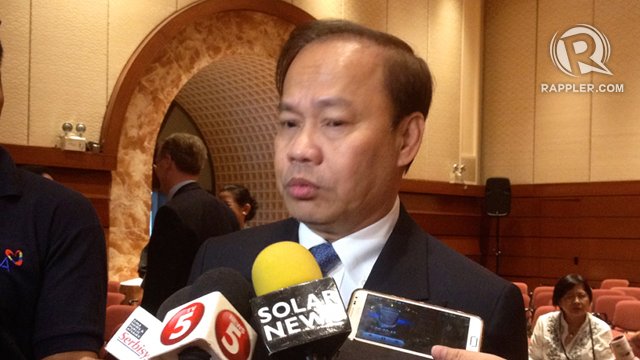SUMMARY
This is AI generated summarization, which may have errors. For context, always refer to the full article.

MANILA, Philippines – It could take up to a decade for perpetrators of the pork barrel scam to be convicted if the current average length of time the Sandiganbayan finishes cases is taken into account.
In 2002, it took an average of 6.6 years for the Sandiganbayan to complete a case – from the filing of charges to the release of a verdict, according to former Ombudsman Simeon Marcelo.
More than a decade later, the situation has worsened. In the 3rd Ombudsman Integrity Lecture Series held at the Asian Development Bank on Tuesday, January 14, Marcelo said it now takes an average of 10.2 years to process cases against government officials.
Marcelo, who served as Ombudsman from 2002 to 2005 under the Arroyo administration, said fixing the bottleneck in the Sandiganbayan is a key component in the war against corruption.
“Even if Justice (Conchita Carpio) Morales can create a perfect Ombudsman’s office, she will not be able to suppress corruption because of the Sandiganbayan. Right now, that’s where the bottleneck is,” Morales said.
Marcelo was one of the panel of reactors to the lecture delivered by University of Cambridge Professor Barry A. K. Rider.
In his presentation titled “Current Issues in the War Against Corruption,” Rider said one of the complications of having an elite special enforcement agency against corruption is that the work undertaken by agencies tend to depend on the political atmosphere of the moment.
“The problem with running these agencies is they are trying to pander too much to the politicians that established them,” Rider said. “In fact, it becomes not a solution to the problem but a manifestation of the problem,” Rider said.
In the Philippine context, social inequality also plays a large role.
“The problem here really is the capture of the institutions by the powerful and the elite. That’s why they become unaccountable for their actions,” Marcelo added.

To expedite the resolution of cases, Marcelo, during his term, sought the support of senators for a bill seeking to appoint more justices to the Sandiganbayan. But the move was “vehemently opposed” by the justices themselves, Marcelo said.
Two administration senators last year filed bills to fix delays in the anti-graft court. Sen TG Guingona, for example, filed a bill that will increase the number of Sandiganbayan associate justices, and will create 15 divisions with 3 justices each. The Sandiganbayan now has 5 divisions of 3 justices each. Under Guingona’s bill, 7 divisions will be stationed in Metro Manila, 4 in Visayas, and 4 in Mindanao. (READ: Fix delays in the Sandiganbayan)
‘Fact-finding committee most corrupt’
The Office of the Ombudsman is also suffering from a lack of personnel – another factor in the slow progress of cases against government officials.
Marcelo said a number of “good people” left the Ombudsman’s office during the term of his successor, Merceditas Gutierrez, who later resigned after the House of Representatives voted to impeach her. Gutierrez was a key ally of then President Gloria Macapagal-Arroyo. She was a law school classmate of Mrs Arroyo’s husband Mike.
It’s not only personnel shortage that is hampering operations.
Marcelo said he discovered during his time that the fact-finding unit of the Office of the Ombudsman, where complaints are filed, evaluated and investigated, was, in fact, the most corrupt department.
“It’s quite ironic that the Office of the Ombudsman, the anti-corruption agency of the Philippines, was also plagued with corruption and the extent of corruption was overwhelming,” Marcelo said.
As the agency tasked to probe erring officials, the Ombudsman does not have enough investigators.
Compared to Hong Kong – where the ratio of investigators to government officials and employees is 1 is to 208, the Philippines has 1 investigator for every 15,000 government employees.
Despite the lack of personnel, the former Ombudsman said he himself saw some state prosecutors taking siesta (naps) at 2 pm, or if not, playing chess and drinking liquor.
What can be done? One solution is to hire young blood to bolster the Ombudsman’s “very weak prosecutorial unit,” Marcelo said.
Ateneo School of Government Dean Tony La Viña, one of the panel of reactors, stressed the need for intergenerational leadership.
“Effective ethical and intergeneration leadership is key for success. We have to pay attention to succession in our agencies,” La Viña said. – Rappler.com
Add a comment
How does this make you feel?
There are no comments yet. Add your comment to start the conversation.